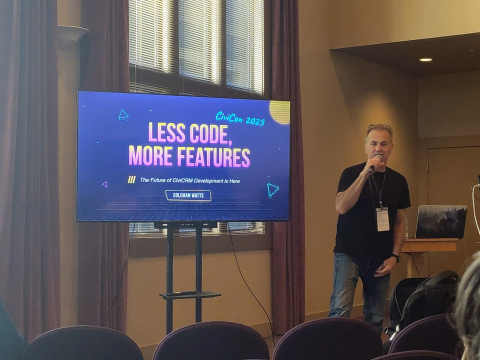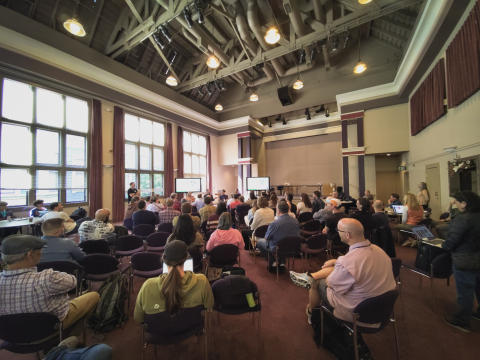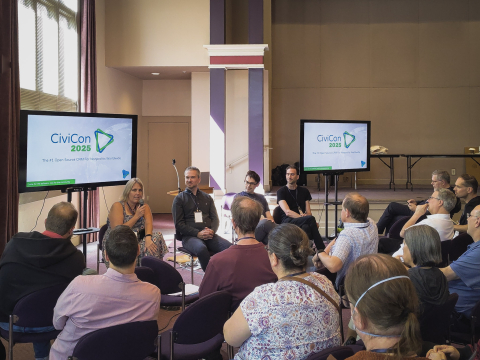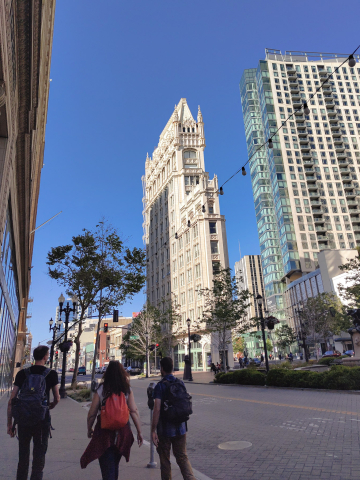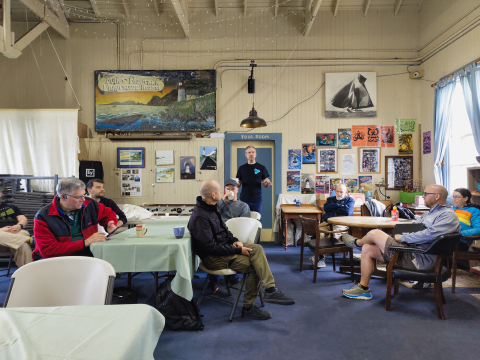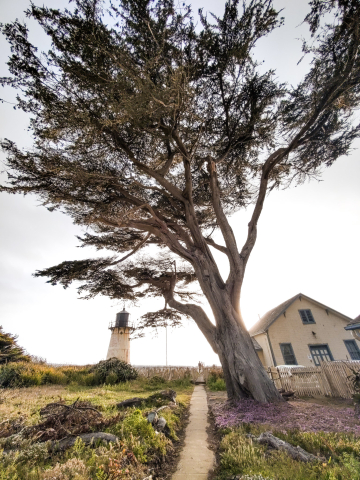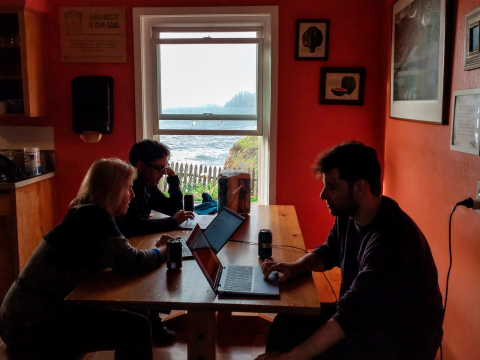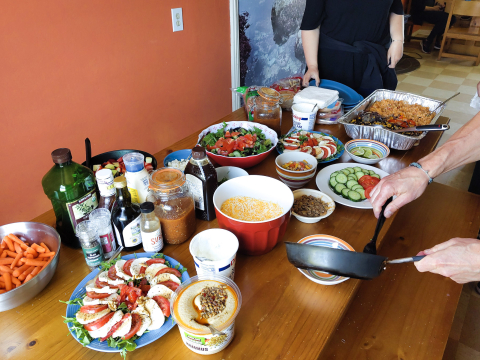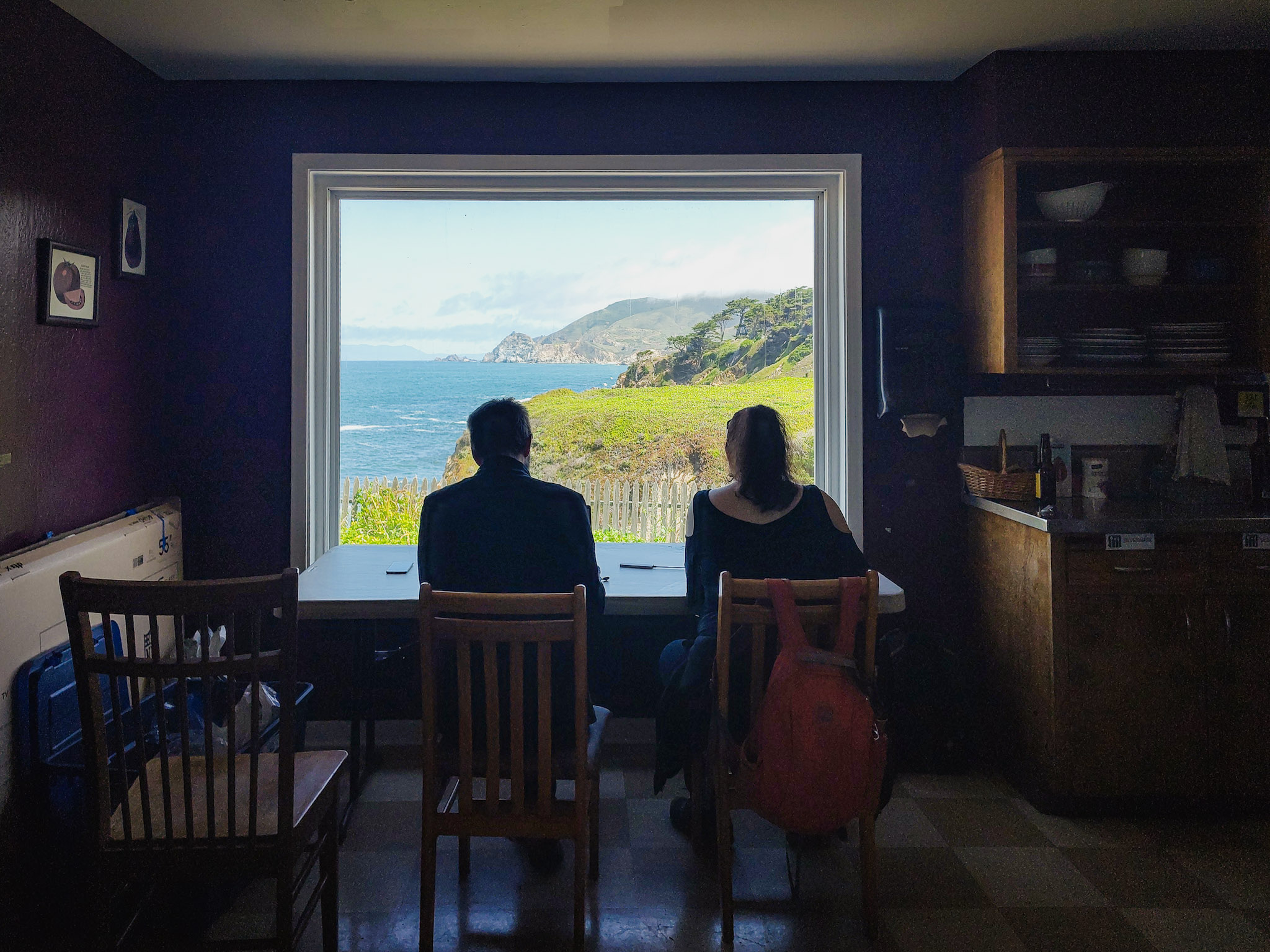
CiviCon 2025 took place this May in California, where it all began 20 years ago! With some time passed, I would like to use this blog post to look back:
- On two days of a diverse conference program in Oakland, where I was able to present our work at SYSTOPIA and learn cool new things. (If you're interested: The sessions were recorded and will be made available on civicrm.org in the coming weeks!)
- And on four days of sprinting in Point Montara on the Pacific coast. An impressive backdrop for learning, working together, sharing ideas and – last but not least – good food in excellent company.
My personal conclusion: I am optimistic. That's not easy for me to say theses days. Between political chaos and AI hype, things are heading in a worrisome direction in the world of technology. And nowhere is that more apparent than in San Francisco, a tech metropolis maimed by extreme social inequality. But this open source project has shown that there is another way. With a vibrant community, continuous technical innovation and independence from big tech, CiviCRM is on a path that feels damn close to a future.
20 Years of real Open Source
Dave Greenberg's (CiviCRM co-founder) review of two decades of CiviCRM recounted the development approach that Civi has pursued from the very beginning: open-source, international and community-driven.
In her keynote speech, Gena Dellett explained what's behind the CiviCRM community. The project lives through the active participation of developers, end users and people like me, who have somehow also found their place in “CiviLand”.
Another key ingredient is the LEXIM model, which the core team has been using to develop CiviCRM for several years and which was explained on the conference panel. LEXIM stands for “Leap by Extension, Iterate by Month”. This means that monthly updates ensure continuous improvements, while major innovations come via extensions. This approach allows each organization to decide when new features are implemented and minimizes unpleasant surprises in productive systems. So if you've ever wondered why so much of CiviCRM is done via extensions, now you know!
CiviCRM 6: Best CiviCRM ever
One focal point of the conference was on CiviCRM 6 – the latest milestone in core development, which comes with some very powerful technical innovations. SearchKit and FormBuilder, the Entity Construction Framework and River Lea should be mentioned here. These technologies have come a long way and finally get a chance to show what they can do in the latest version.
- SearchKit und FormBuilder
SearchKit is the Swiss army knife for CiviCRM power users. It can handle all tasks from the basic creation of reports with the SearchKit Starter Pack to the complex provision of search results in portals and dashboards (session recording coming soon!). Several practical use cases were presented at CiviCon, such as form-based batch data entry or the creation of versatile SearchKit Tokens. - Entity Construction Framework
During his presentation Coleman Watts (CiviCRM Core Team) showed how user-defined entities transform CiviCRM into a universally applicable administration toolkit. The Entity Construction Kit developed by SYSTOPIA allows you not only to manage all your fictitious goats in CiviZoo, but also help nonprofits solving their real-life problems. For example, we use this framework to manage physical and humanitarian resources with the Resource Management extension. - River Lea
River Lea is a new theming framework that is installed by default with CiviCRM 6. With only 15-30kb CSS (instead of several megabytes!) it offers a compact solution to customize the look and feel of CiviCRM: Either by choosing one of the four subthemes (streams) or by creating your own stream using CSS variables. This makes CiviCRM's interface prettier, more accessible, more dark-mode-y and – perhaps for the first time – relatively easy to handle.
Why CiviCRM is not going away
With data protection and digital sovereignty becoming increasingly important, CiviCRM is the logical answer for non-profit organizations. It allows them to protect their contacts' data, remain independent of corporate strategies and shape their software transparently and collaboratively. Or how Alice Aguilar and Jamie McClelland (Progressive Technology Project) put it so succinctly in their session title:
“Now Everyone Hates Big Tech: Pitching CiviCRM just got a whole lot easier”.
At CiviCon, long-standing user organizations demonstrated with their experiences that CiviCRM delivers on these promises. Gena Dellet presented the use at the US Chess Federation: With over 50 membership types, CiviCRM proves that it can handle even the most complex use cases. Nate Frank from the New York State Senate gave an impressive demonstration of how scalable the system is. CiviCRM has been in productive use there for 10 years, providing millions of citizens with information and opportunities to participate in their constituencies.
These success stories are no coincidence. They are based on continuous development by the community. During the sprint, the course was set for further improvements: Under the hood, pull requests were processed, bugs were fixed and new features such as a notification framework were conceived. At the same time, we did not sleep on our end users' feedback. With all its powerful functions and growing complexity, CiviCRM also needs to become more user-friendly and accessible. Concrete results of these efforts are developments for the translation support for SearchKit, an action plan for improving the CiviCRM documentation and a prototype for a UX-friendly menu design.
Conclusion
After 20 years of development, it comes to show: CiviCRM is evolving from a good open source alternative to the most future-proof CRM solution for nonprofits.
Does that sound too optimistic? Perhaps. If you want to form your own opinion and get an impression of the technology, community and everything else that makes up an open source project, then join us at the next CiviCamp. You might not even have to travel that far. Because we are celebrating the anniversary in Europe with an equally scenic location at the CiviCamp & CiviSprint on October 20-24, 2025 in Lunteren, Netherlands.

